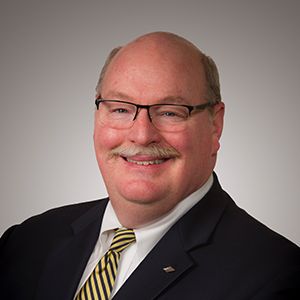It would be fair to say that the decisions on how we invest in transmission and distribution projects, are heavily driven by initial investment cost. What if we could improve the decision-making process by thinking about the longer term effects on society, energy consumers and the environment through considering the quantifiable factors of reliability, speed to implement and other life-cycle value contributors? This suggests a forward-looking approach, and there is every indication that the time is right for a change in philosophy relative to choosing the right installation option based on data rather than historic practices.
Let’s look at overhead and underground installation, for instance. Conversations regarding decisions to install power transmission lines underground or overhead has been ongoing for decades. Using data to help make decisions—on a case-by-case basis—can provide an objective means to evaluate power infrastructure investments and help determine which power delivery solutions—overhead or underground—to employ.
For example, while it’s true that underground can be more expensive on the front end, as rights-of-way become scarce, and improvements in quality and consistency of underground cables and installations increase, costs of overhead compared to underground come more in line. When combined with other factors including repair costs, outages and ongoing maintenance, the parity comes more closely into focus in certain situations.
Further, consider power outages as a life-cycle contributor. With occurrences like the 2003 Northeast blackout, Superstorm Sandy and now Hurricane Matthew, economic and societal impacts of power outages are even more in the forefront. According to a White House report in August of 2013: “Power outages cost the economy between $18 and $33 billion every year.” With numbers like these, both providers and users of electricity are putting these power industry drivers under the microscope:
- Aging infrastructure
- Long-term projected load growth
- New sources of generation (e.g. renewables)
- More volatile weather
- Physical security (e.g. vandalism and terrorism)
So, the industry really must start looking beyond first costs. This philosophy can be a real game-changer. Value-based planning and the construction and implementation of viable methodologies for quantifying life-cycle costs must work hand-in-hand to produce the best outcome for communities, businesses, customers and the utilities that serve them. This is exactly what PDi2 proposes. We will:
- Promote education and decisions based on full life-cycle cost comparisons
- Implement and evaluate case-specific models that include:
- Speed of implementation
- Total life-cycle costs versus first costs of systems
- Cost of delaying the project
- Cost of outages to the economy and tax revenues
- Additional repair and maintenance costs
The quantification of life-cycle costs is clearly an ambitious undertaking and will require much cooperation throughout the entire power industry value chain including:
- Materials Suppliers/Compounders
- Cable Makers
- Installation Contractors
- Equipment Manufacturers
- Utilities, Municipalities and Independent Power Providers
- Public Utility Commissions
A life-cycle cost approach to determine the best power infrastructure options for new and rehabilitation projects should be given strong consideration. Fact-based data can:
- Help utilities justify investment decisions
- Educate stakeholders on all technology and construction options to determine the most viable, reliable and cost-effective solution for the installation of transmission and distribution systems
- Convey qualitative and quantitative value of installation options to all stakeholders
- Determine common methods by which cable systems can be evaluated from both a utility and public-value perspective
- Enable adoption of developed models as an enabler for grid extension in North America
In conclusion, it should be recognized that committing to this kind of shift in philosophy, and converting data-based models into action, can have a sizeable impact on the industry. When considering the effect that repairs, operations and maintenance have on total costs, along with acknowledging that improved reliability leads to enhanced reputation and happier customers—adopting a life-cycle approach to project determination is simply the right thing to do.
As seen in November 9 issue of Electric Light & Power

About the authors: Brent Richardson is Manager, End Use Marketing, North America, Dow Electrical & Telecommunications. In this role, Brent represents Dow’s Electrical & Telecommunications business to the utility industry in North America. Prior to joining Dow in May of 2007, Brent worked for nearly 25 years for Duke Energy in Charlotte, NC. His experience includes many components of the utility business including Field Engineering, Distribution Standards, Project and Product Management and Marketing. He received a BS in Electrical Engineering from Virginia Tech and is a registered Professional Engineer in NC and SC. Richardson serves as Vice Chair of the ICC A14D – Cable Standards subcommittee and is the Vice Chair, Voting Member, of the Power Delivery Intelligence Initiative.

Nathan Kelley, Vice President, High Voltage Cables and Systems Business Unit, Prysmian. Since joining Prysmian Cables and Systems in 1997, Kelley has been involved with research, design, installation and sales of High Voltage and Extra High Voltage power cable systems. From 2002 until 2015, he managed the engineering team responsible for the High Voltage Business Unit’s activities and actively participated in many of the largest HV cable projects ever conducted in North America. Kelley was raised in Indiana, but received his BS in Mechanical Engineering from Duke University in 1995 and his MS in Mechanical Engineering from Georgia Institute of Technology in 2002. He also is Chair and Voting Member of the Power Delivery Intelligence Initiative.

